Teen life is a moving target. One moment you think you have a plan and the next you hear a sigh at the dinner table. This season has me chasing simple, real life hacks that help instead of add stress. I made this post to share those ideas with other parents who want less drama and more calm. No fluff, just practical moves you can try this week.
Who it’s for If you are parenting a teenager and want better talks, safer choices, and more trust at home, this post is for you. If you care about routines that fit a teen’s pace and still keep you in the loop, you will find something that helps. This is meant for busy families who want real steps they can try without a long plan.
1. Twin Outfits for Bonding

If you want a simple, real way to connect with your teen, try twin outfits. It may feel playful, but it opens doors for conversations. You both get a small moment that feels special. It can help your teen feel seen without pressure.
Why this helps
This small habit sets a calm, shared ritual. It shows you notice their style. It gives you a convenient starting point for talks about outfits, goals, and plans.
How to start
– Shop together for twin outfits.
– Pick items that fit both of you. Think matching hoodies or graphic tees that show each personality.
– Make comfort a priority. If it feels good, you’ll wear it more.
Make it a routine
– Set a monthly theme like cozy layers or sporty street style.
– Use it for weekends, family trips, or photos.
Ways to share with care
– Post with your teen’s OK, if you want to share. Let it be about bonding, not a perfect feed.
– Keep the tone light and positive.
– Let your teen lead on what to reveal.
Practical tips
– Choose easy-care fabrics like cotton blends.
– Pick colors that mix well and won’t clash.
– Size up if needed for comfort or growing.
Next steps
– Plan a 60-minute shopping trip.
– Try two outfit combos at home.
– Do a quick photo walk to capture a memory.
1. Twin Outfits for Bonding
Editor’s Choice

Cute Dinosaur Couple Hoodie Matching Couple Sweatshirt Valentine’s Day O…
 Amazon$25.99
Amazon$25.99
Sneaker Matching Graphic T Shirt for Men Streetwear Cotton Tee Comfortab…
 Amazon$26.20
Amazon$26.20
Linen Pants Men Casual 2025 Summer Beach Elastic Drawstring Waist Yoga P…
 Amazon$16.97
Amazon$16.972. Personalized Care Packages
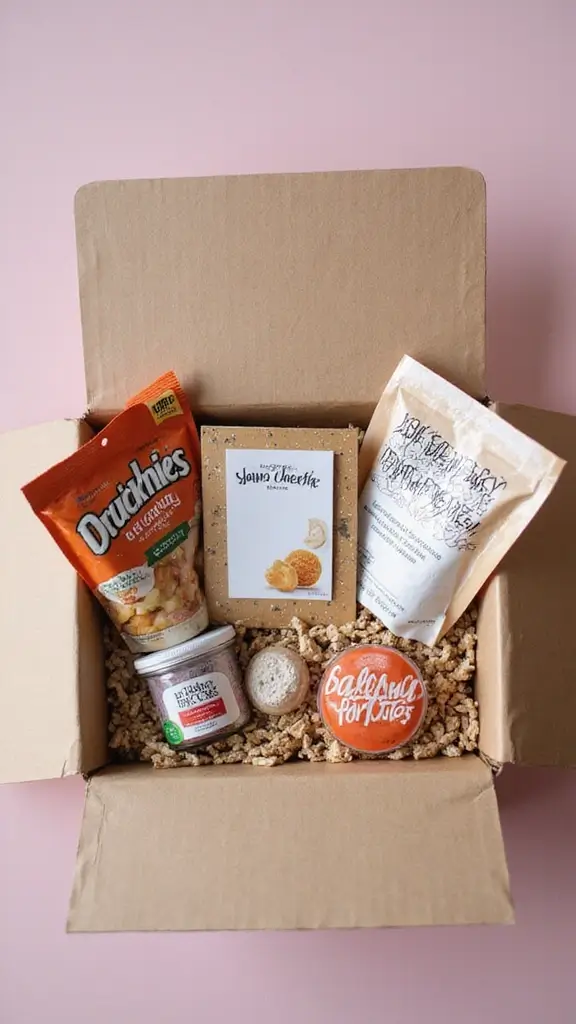
Your teen days are busy and loud. You want to show you care without nagging. A personalized care package can do that. It travels with them and feels thoughtful.
Here is why it works. It makes you present even when you are apart. It gives a quick boost on tough days.
Now, here is how to create one that sticks.
– Choose a theme.
– A theme guides what goes inside.
– Pick items your teen will love.
– Include snacks, a note, and something tied to their hobby.
– Include a short playlist.
– Add one or two songs that fit their mood.
– Decide how to deliver.
– Have it sent to home or bring it to school.
Next ideas you can copy right away:
– Exam week boost.
– Pack healthy snacks, tea, sticky notes, and a pep note.
– After a rough day.
– Add cozy socks, lip balm, and a short letter.
– Just because.
– Include a small gadget, a doodle pad, and a playlist card.
How to assemble fast:
– Set a budget and a box.
– Put the note on top.
– Wrap and label.
This approach stays light and real. It honors their space while showing you care.
2. Personalized Care Packages
Editor’s Choice


Warm & Cozy Ultra-Luxe Cloud Sock for Women & Men – Super Soft Luxurious…
 Amazon$8.99
Amazon$8.993. Create a Family Bucket List
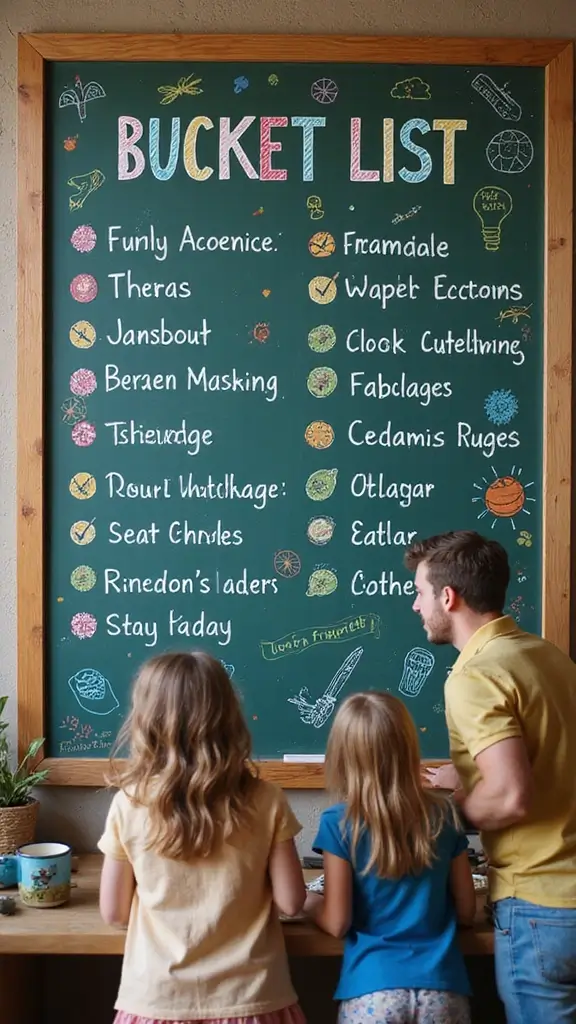
Struggling to get your teen excited about family time? A simple fix is a family bucket list. It turns plans into shared goals and makes outings feel like teamwork.
Next steps:
– Sit with your teen and brainstorm ideas on a big board or printable sheet. Include trips, concerts, movie nights, new restaurants, nature walks, or a volunteer day.
– Make it visual. Add color, photos, and sticky notes. Put it where everyone sees it, like the fridge.
– Set small deadlines. Aim to finish one item every few weeks. Keep it steady, not stressful.
– Let your teen own the plan. Add their ideas and lead one outing.
Here is why this works: it gives both of you a say and turns chores into chances to do fun things together. A visible list builds excitement and commitment.
Keep it going with quick checks. Celebrate each checked item with a shout, a snack, or a small reward. If plans change, swap in a new idea and keep moving.
Sample ideas to spark your list: a weekend road trip, a museum visit, a picnic in the park, trying a new cuisine, or a starry movie night in the yard.
Final tip: stay flexible. The point is together time, not perfect plans.
3. Create a Family Bucket List
Editor’s Choice

Graphic Image The Family Bucket List, British-Tan Bonded Leather | Handb…
 Amazon$142.00
Amazon$142.00
Eastern Wolf 8 Pads Sticky Notes 3×3 Self-Stick Notes 8 Bright Multi Col…
 Amazon$5.99
Amazon$5.994. Respect Their Privacy

In a teen’s world, privacy isn’t a sign of rebellion. It is a sign of growing trust. You can protect them and give space at the same time. Here is how privacy can work for both of you.
– Set clear, agreed boundaries. Talk about what is off limits and what is okay to share. Put it in simple terms you both understand. This keeps surprises from turning into fights.
– Respect spaces and belongings. Knock before entering a room. Do not read messages or look through stuff without a plan you both agree on. If unsure, ask to check in instead of snooping.
– Check in, not pry. Use a short check-in once a day or every few days. You say, “I’m here if you want to talk.” Let them decide what to reveal.
– Build trust with small promises. Do what you say you will do. Keep confidences. If safety comes up, address it calmly with a plan together.
Putting this into practice helps your teen feel seen while they learn to handle bigger worries on their own. Next steps: set a quick privacy chat, write a simple rule, and try a weekly check-in.
4. Respect Their Privacy
Editor’s Choice

Heartfelt Conversations – A Family Communication Journal: 100 Prompts an…
 Amazon$14.99
Amazon$14.99
Dynasty Hardware Privacy Door Lock Lever Lockset, ADA Compliant, Light D…
 Amazon$47.95
Amazon$47.95
Taylor 5849 Four-Event Digital Timer with Whiteboard for School, Learnin…
 Amazon$11.14
Amazon$11.145. Open Door Policy for Conversations

Feeling like your teen won’t open up? You want a space where they can share thoughts and feelings without fear. Build an open door policy for conversations. The idea is simple: you invite talk, you listen, and you reply with care.
Here is why it works. Teens want to be heard more than they want your advice. When you show you listen, trust grows. You gain a path to help with big or small worries.
Action steps you can use now:
– Set a weekly check-in. Pick a steady time—dinner or after homework—so your teen knows when to talk.
– Start soft. Use casual moments like car rides or games to bring up deeper topics.
– Listen first. Put your phone away, look at them, and nod. Reflect back what you hear with short phrases.
– Validate and clarify. Say things like, “That sounds hard,” or “Tell me more about what happened.” Then ask open questions.
– Give them space and time. If they push back, say, “I’ll be here when you’re ready.”
With practice, these steps become habit. You’ll see more honest talks, fewer power struggles, and a calmer home.
Keep the door open after fights too. Small talks add up to big trust.
5. Open Door Policy for Conversations
Editor’s Choice

200 Family Conversation Cards – Put Down The Phones & Connect with Famil…
 Amazon$29.97
Amazon$29.97
The Mindfulness Journal for Teens: Prompts and Practices to Help You Sta…
 Amazon$6.53
Amazon$6.536. Encourage Extracurricular Activities

Are you worried your teen spends hours online and skips clubs, sports, or art? You want them to grow through extracurriculars and learn new skills. With steady support and wins, you can help them find a path that fits their day.
Here’s why they matter
They build confidence, teach teamwork, and give them a place to belong. A good fit brings new friends and fresh routines.
– Explore options together by checking school catalogs and local clubs.
– Attend events with them at games or concerts and talk afterward.
– Let them lead and offer one trial class.
– Build a simple plan with two evenings a week for practice.
– Help with logistics by arranging rides and gear and covering small costs.
– Watch for balance by putting grades first and noting stress.
– Foster connection by inviting friends to join and meeting mentors.
– Be honest about results because some teens try many things before they find a fit.
Be ready to start small. Try one idea this week. A small start can spark a bigger habit. If your teen stays busy with something they like, high school feels a lot more real. That small effort now can unlock focus, pride, and new friends later too.
6. Encourage Extracurricular Activities
Editor’s Choice

Big Life Journal – Daily Journal for Kids – A Growth Mindset Workbook fo…
 Amazon$24.00
Amazon$24.00
GHB Soccer Agility Training Equipment, 6 Agility Poles, 20ft Speed Ladde…
 Amazon$45.99
Amazon$45.99
Caliart 176PCS Art Supplies Sketching Kit with 100 Sheets 3-Color Sketch…
 Amazon$25.99
Amazon$25.997. Establish a Chore Chart
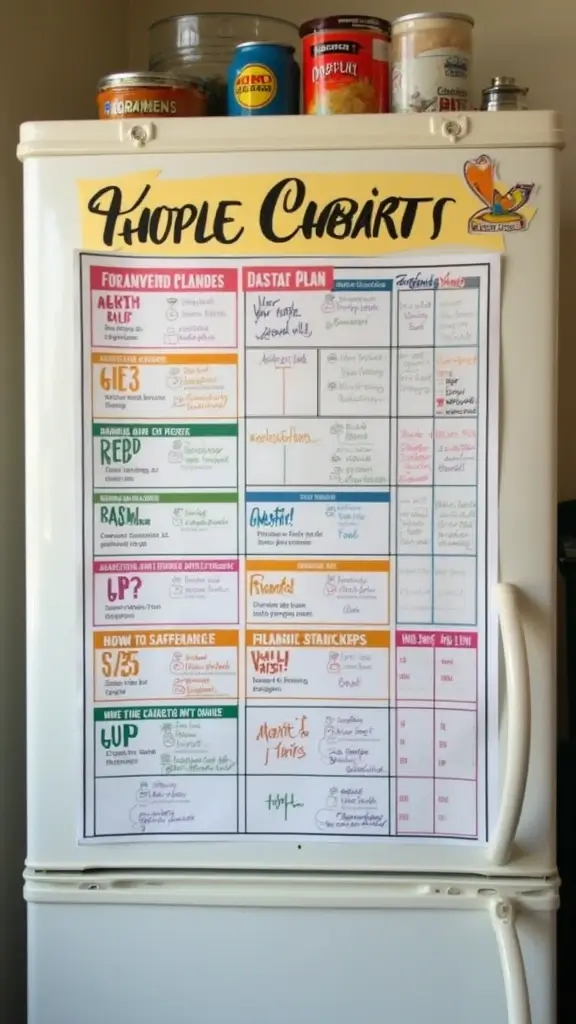
If you want chores to stick, a chart can do the work for you. It shows what to do, when to do it, and why it matters. Here is how to build one your teen will actually use.
– Step 1: Pick a chart style. Use bright colors, simple icons, and a clear grid. Let your teen pick the look. When it feels theirs, it stays.
– Step 2: Choose tasks together. Offer real options like making the bed, clearing the table, taking out the trash, doing laundry, feeding a pet, or tidying the room. Keep tasks doable in 10 minutes or less.
– Step 3: Mix daily and weekly chores. Daily tasks build routine; weekly tasks teach planning. Leave room for a flexible pick so your teen stays motivated.
– Step 4: Track with points and rewards. When a chore is done, add points toward a reward such as a movie night, a favorite snack, or a special outing. Make the system clear and fair.
– Step 5: Post it where it’s seen. A kitchen wall or bathroom mirror works. Let your teen own the chart by choosing tasks and updating it.
– Step 6: Review and adjust. Have a short weekly check-in. Acknowledge effort, celebrate wins, and shift chores if needed.
Here’s a simple layout to try: days across the top, chores down the side, and points in a tiny box at the end.
Give it a try this week and watch chores flow smoother into daily life.
7. Establish a Chore Chart
Editor’s Choice

4 PACK Magnetic Dry Erase Board Sheet for Fridge, 12″x8″ Erasable Refrig…
 Amazon$9.99
Amazon$9.99
1620 Holographic Rainbow Small Star Stickers for Kids Reward, Behavior C…
 Amazon$5.99
Amazon$5.99
2 Pack Magnetic Reward Jar for Kids Star and Heart Incentive Jars for Cl…
 Amazon$9.96
Amazon$9.968. Share a Book Together

If your teen seems glued to screens, you can still build closeness through a book. Reading together creates real talks and trust. Here is why this works: stories give you common ground and simple, natural questions.
– 1. Pick a book you both want Choose a title that fits your interests and your teen’s age, with chapters you can finish together.
– 2. Set a short, regular reading time Schedule 15 to 20 minutes, maybe after dinner or on weekend mornings, and keep it consistent.
– 3. Read in a flexible way Let your teen read aloud if they want, or glide through pages on their own, then pause to chat.
– 4. Talk after each session Ask simple questions about what surprised them, what worries a character, or what they would do in a tough moment.
– 5. Start a small book club ritual Meet with snacks, choose a book each month, and log quick notes on what you learned.
– 6. Create a cozy reading space A comfy chair, soft light, and a quiet spot make talks feel calmer and friendlier.
– 7. Let them pick genres or trends Explore popular genres or authors their friends love to keep it lively.
Take small steps, not big leaps. You will see trust grow over time.
If your teen loses interest, pause and switch to a shorter book or a different pace. The goal is steady connection, not perfect pages. This simple habit adds warm talks, trust, and shared moments your teen will remember.
8. Share a Book Together
Editor’s Choice

DUMOS Comfy Saucer Chairs Cozy Faux Fur Soft Lounge Cute Folding Bedroom…
 Amazon$82.99
Amazon$82.99
Floor Lamp -WioMio Led Floor Lamp with Remote and Touch Control for Step…
 Amazon$29.99
Amazon$29.99
9. Celebrate Milestones Big and Small

Here is why celebrating wins matters. Teens feel seen when you notice both small steps and big wins. It builds confidence and keeps them moving forward. You gain by creating warm, positive moments that feel real to them.
Next steps:
– Plan simple celebrations for every win, from a quiet dinner to a short movie night, so praise stays meaningful.
– Create a celebration jar where your teen adds each achievement; you read the note aloud and talk about the skill that helped them reach it.
– Keep the mood light and positive; focus on effort and progress instead of perfect results.
– Try practical ideas such as a small gathering with snacks and music, a park visit, or a quick ice cream stop after a tough task.
– Plan a normal outing that fits their interests, like skating, hiking, or biking, to celebrate without pressure.
– Add texture to your routine with tiny notes left on a mirror or in a backpack to remind them of their strength.
– The payoff is real because these moments show you see them and boost motivation for the next goal.
– Start small this week.
– Your teen will notice and your home will feel warmer.
– Keep it steady for a month and watch trust grow.
9. Celebrate Milestones Big and Small
Editor’s Choice

Mason Jar Candle Making Kit,4 Pack Regular Mouth Lids,Cups,Holder,20pcs …
 Amazon$12.99
Amazon$12.99
Personalized Custom Monogram Initials Note Cards – Flat and Folded Corre…
 Amazon$18.45
Amazon$18.4510. Teach Financial Literacy

Teach Financial Literacy to Teens
Your teen needs financial literacy for teens that lasts beyond the checkbook. You can guide them with simple, real steps. This plan builds money skills they can use every day.
Here is how to start:
– Start with a small allowance tied to chores. This gives them money to manage and a reason to track what they buy.
– Teach a simple split: spending, saving, and giving. A basic rule is 50% for needs and wants, 30% saved, 20% shared. Adjust as you like.
– Involve them in family budget talks. Let them see the grocery list, compare prices, plan for bills. They learn to think before they spend.
– Use apps or games to make budgeting fun. A goal can be a new bike or a game. The app tracks money, shows progress, and sparks friendly competition.
– Encourage saving for bigger buys. When they save, they feel a win when the item is bought.
– Talk about credit and debt in plain words. Explain what interest means and how loans work. Keep it real and simple.
Next steps: try one or two ideas for a month, then adjust as your teen grows.
10. Teach Financial Literacy
Editor’s Choice
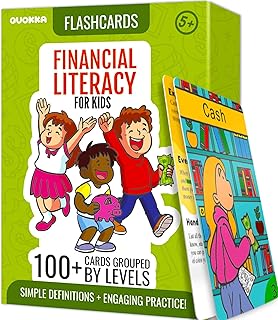
QUOKKA Financial Literacy Flash Cards for Teens – 110 Cards Teaching Kis…
 Amazon$19.99
Amazon$19.99

EZdhuawuse Reward Bucks Charts for Kids – 633Pcs Back to School Gifts Go…
 Amazon$15.99
Amazon$15.9911. Celebrate Their Individuality

Why celebrating individuality matters
Your teen is trying to find their voice. Supporting what makes them different helps their confidence grow. Here is how you can act.
– Let them choose their style: Give them space to pick outfits and colors that feel like them.
– Support their hobbies: Show interest in what they love, even if you do not fully get it.
– Join events together: Go to a show, game, or club so they see you care about their world.
– Provide a display space: Create a spot at home for art, music, or projects they want to share.
– Keep open talks: Ask what they love and listen without judging.
– Praise effort, not perfection: Notice hard work and growth, not just the end result.
Next steps: pick one idea to try this week and watch how your teen opens up.
11. Celebrate Their Individuality
Editor’s Choice

Art Display for Kids Artwork, 10ft Picture Hanging Wire Kit with 48 Clip…
 Amazon$21.99
Amazon$21.99
The Teen Vogue Handbook: An Insider’s Guide to Careers in Fashion
 Amazon$21.23
Amazon$21.23
12. Encourage Open Discussions About Relationships

Your teen faces big feelings about dating. You want to help without piling on rules. Open conversations about relationships can build trust, clarity, and safer choices. When your teen knows you listen first, they may share more.
Here is why this approach works and how to do it.
– Make space for talks. Create a calm, private moment. A relaxed setting makes teens feel safe to share.
– Share small real examples. Mention a simple dating moment from your past. Keep it brief so you stay helpful, not preachy.
– Ask open-ended questions. Avoid yes or no. Try prompts like, “What felt easy about that date?” or “What worries you most right now about relationships?”
– Normalize feelings. Tell them all emotions matter. Let them express joy, doubt, or fear without judgment.
– Use relatable media. Cite a movie scene or a song lyric. Ask, “What would you do in that moment?”
– Set boundaries and safety. Talk about consent, respect, privacy, and online safety. Keep it practical with real examples.
– Follow up. Check in regularly. A quick, short chat once a week keeps the door open.
Next steps: pick one tactic, try it for a week, and adjust based on what your teen says.
12. Encourage Open Discussions About Relationships
Editor’s Choice

TableTopics Family Conversation Cards for Kids & Parents with 135 Questi…
 Amazon$17.49
Amazon$17.49
Raising Good Humans: A Mindful Guide to Breaking the Cycle of Reactive P…
 Amazon$11.96
Amazon$11.96
The Mindfulness Journal for Teens: Prompts and Practices to Help You Sta…
 Amazon$6.53
Amazon$6.5313. Volunteer Together

You’re looking for a real way to bond with your teen and teach care for others. The fix could be volunteering together. Pick a local charity or cause you both care about. Make it part of your routine so it feels normal, not a one-off day.
Here is why this helps: you gain time together, your teen sees how small acts add up, and you begin real talks about the world. After each session, ask what stood out. This keeps the conversation alive and helps them think about their place in society.
– Research local charities or causes that fit your family.
– Share goals and listen to theirs.
– Plan a simple schedule with a few regular tasks you can handle.
During the work, stay curious. Ask questions, listen, and let them lead some choices. Keep notes in a quick journal so you can reflect later.
After volunteering, talk about the impact and what you learned. Celebrate effort, not just results. Keep the pace doable so you both feel it.
Next steps: keep it steady, adjust as needed, and share safe, positive wins with family and friends.
13. Volunteer Together
Editor’s Choice

Family Legacy Memory Journal: Keepsake for Capturing Stories, Heritage &…
 Amazon$24.99
Amazon$24.99
TableTopics Original Conversation Starter Cards for Adults to Break The …
 Amazon$17.49
Amazon$17.4914. Utilize Calendar Apps for Family Planning
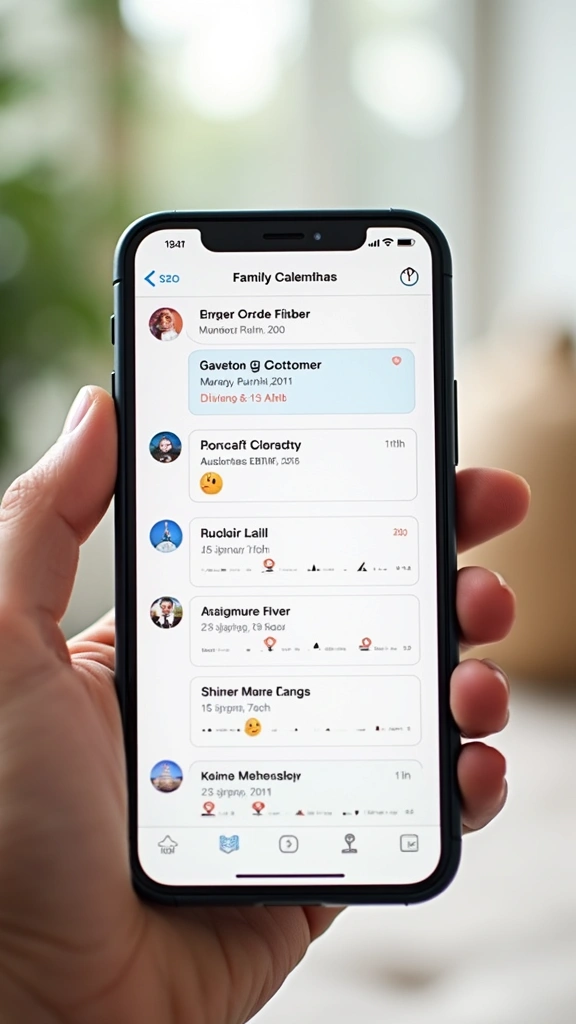
Why a family calendar keeps everyone on track
If your teen’s days spin from practice to study group, staying in the loop is tough. A family calendar app puts all plans in one place. You see the week at a glance. Your teen learns to plan ahead. Less chaos means more time for real moments together.
Here is why this helps:
– It teaches responsibility. They add events and check the list.
– It cuts missed commitments. Reminders pull everyone back on track.
– It keeps you in sync without a flood of texts.
Next steps to set it up.
– Step 1: Pick a calendar app together. Look for a shared calendar, reminders, and color codes. Try Google Calendar, Apple Calendar, or Cozi.
– Step 2: Create a Family calendar and share it. Give both of you editing rights so updates are instant.
– Step 3: Add core events. Practices, games, tutoring, and doctor visits. Include time, place, and notes.
– Step 4: Use reminders. Set alerts 24 hours before and again a few hours before events. Add a location reminder if you drive.
– Step 5: Schedule a weekly check-in. Spend 10 minutes planning the week ahead and decide who will add new events.
– Step 7: Make it a habit. Encourage your teen to add their own events and follow through.
Note: tech can fail. Keep a printed list as a backup.
14. Utilize Calendar Apps for Family Planning
Editor’s Choice


Monthly Whiteboard Calendar for Wall, Small 16″ x 12″ Dry Erase Board wi…
 Amazon$9.99
Amazon$9.99
15. Set Limits on Social Media

Your teen spends time on apps. You worry about mood, sleep, and focus. You want limits that help, not spark a fight. This plan gives simple steps to set social media rules that are fair and easy to keep.
Set clear rules you both can follow
– Decide a daily limit for social media use and a nightly cut‑off.
– Keep phones out of the dining room and away from the bedroom after a certain time.
Talk and tune in:
– Explain why the rules matter. Ask what helps them stay steady online.
– Encourage them to unfollow or mute accounts that make them feel off. Review the list every month.
Be a good role model:
– Show healthy use yourself. If you put your phone away at meals, they notice.
Practical tools:
– Use built‑in controls on their device. iPhone users can use Screen Time; Android users can use Family Link.
– Do a weekly check‑in to talk about wins and tweaks.
Know the limits:
– Boundaries help, but they don’t fix every problem. Some days you’ll both need to adjust.
Stay the course:
– Keep the tone calm. Consistency builds trust and makes this easier for your teen.
Next steps:
– Try a two‑week family tech plan. Note changes in mood, sleep, and focus, then tweak.
15. Set Limits on Social Media
Editor’s Choice


Daily Planner Undated, Asten To Do List Notebook Hourly Schedules Spiral…
 Amazon$8.48
Amazon$8.4816. Create Family Traditions

Why family traditions matter
If your teen seems distant, traditions can pull the family closer. They give a steady place to belong. They’re simple to start and easy to keep, even on busy weeks. You’ll both look forward to them.
– Brainstorm together. Sit at the kitchen table and ask for ideas. Write them down without judging. Pick two or three traditions you both like.
– Schedule them. Choose a regular time for each ritual. A weekly dinner is a strong start. A monthly outing can be a bright spark. Put the dates in the calendar now.
– Make the rituals real. Add small touches that feel special. A favorite dish, a game night with a simple rule, or a movie with a cozy theme. Let your teen add music or snacks.
– Involve your teen in planning. Let them steer a season or rotate roles. They can pick the movie, the menu, or the activity. This builds ownership.
– Capture memories. Take photos or short videos. Save them in a shared album you both can revisit. It helps during rough teenage years.
– Celebrate small wins. A good test result, practice effort, or kind act can be honored in your tradition. It keeps encouragement visible.
– Stay flexible. Traditions should bend when life gets busy. If a week slips, adjust rather than cancel.
Next steps: choose your top two traditions, set dates, and start this week. You’ll notice the connection grow.
16. Create Family Traditions
Editor’s Choice

Sorry! Kids Board Game, Family Board Games for Kids and Adults, 2 to 4 P…
 Amazon$7.99
Amazon$7.99
Ywlake Photo Album 4×6 500 Pockets Photo, Extra Large Capacity Family We…
 Amazon$15.99
Amazon$15.99
The Bradshaw Family Cookbook: Our Favorite Recipes for Game Days, Weekda…
 Amazon$24.49
Amazon$24.4917. Encourage Journaling

Feeling stuck when your teen won’t open up? Journaling can give them a safe space to share thoughts and feel seen. It helps them process moods, practice writing, and ease daily stress.
Here is why this works: writing lets teens tell their own story in their own pace. Doodles, sketches, and short notes can fit how they think and feel. A small habit of reflection now can pay off later.
– Choose a style your teen loves. Let them pick a plain notebook, a guided journal, a digital diary app, or a sketch book. The right choice makes them want to use it.
– Build a cozy routine. Set aside about 10 minutes, a few times a week. A quiet corner and a calm mood help. If you join sometimes, it feels less lonely.
– Respect privacy and keep it simple. Journaling should feel safe for them. They decide what to share and when. Your job is to listen, not judge.
– Offer light prompts to spark writing. Prompts give a gentle nudge without turning into homework. Rotate prompts to keep it fresh.
– Try a gentle two‑way approach. Exchange journals occasionally or read a page together and talk, only if they’re comfortable. This builds trust, not pressure.
– Make it easy to start. Put prompts on sticky notes, use quick voice notes, or add a doodle or photo to the page.
– Be honest about limits. Journaling helps, but it isn’t a magic fix. If you notice someone at risk, seek help right away.
Prompts to spark writing you can try
– Three things that stood out today.
– What moment made you feel calm or excited.
– One thing you wish adults understood about you.
– If your mood had a color, what would it be and why.
– A goal you want for the week, big or small.
– Draw a quick mood picture or doodle to go with your words.
Next steps
– Start simple this week. Bring home a notebook your teen might like and ask them to choose. Then set a soft, regular time to write together or separately. Small, steady steps beat big, forced plans every time.
17. Encourage Journaling
Editor’s Choice

Put Your Feelings Here: A Creative DBT Journal for Teens with Intense Em…
 Amazon$15.68
Amazon$15.68
Soucolor 9″ x 12″ Sketch Book, 1-Pack 100 Sheets Spiral Bound Art Sketch…
 Amazon$9.49
Amazon$9.49
HappyMe Teen Journal – Guided Wellness Journal for Teens: Promote Happin…
 Amazon$32.90
Amazon$32.9018. Stay Informed on Trends

Here is why you want to stay informed about teen trends. It helps you connect and keep talks lively. When you know what your teen cares about, you can join the chat without forcing it.
Next steps to stay in the loop:
– Ask what artists, shows, or games they like this week. Let them talk and share why it matters to them.
– Follow teen culture pages. Skim popular social media posts on fashion, music, and gadgets. Do a quick daily check so you don’t miss big moments.
– Do events together. If a concert, pop-up, or game night fits their world, go with them. The shared memory becomes a bridge for future talks.
– Share your view. Offer your take with a friendly tone. Then invite their thoughts.
– Create a weekly trend check. Block 15 minutes for a short chat about what’s hot now.
– Watch and discuss together. Pick a show or video they enjoy and talk about the message after.
– Be honest about limits. Trends move fast. You don’t have to know every detail. You just need to listen and stay open.
That steady habit keeps you in the loop and guides your talks with respect. You set the tone with calm curiosity.
18. Stay Informed on Trends
Editor’s Choice

The Culture Code: The Secrets of Highly Successful Groups
 Amazon$12.39
Amazon$12.39
19. Practice Gratitude Together

Gratitude can lift mood and help your teen handle stress. When you make it a family habit, you give them a safe space to talk. Here is why this works with teens: small, real moments beat long lectures.
Let’s break it down into simple steps.
– Start at a calm time, like dinner or a car ride. Everyone shares one thankful moment from the day.
– Try a family gratitude jar. Slip a note in with one thing you’re grateful for. Read a few aloud when you gather.
– If you prefer writing, keep a brief gratitude journal. Each person writes one line, then reads it aloud if they want.
– Use quick prompts to spark talk. Examples: What small thing helped you today? Who made you smile this week? What moment surprised you at home or school?
– Set a reminder. A short phone ping or a sticky note on the kitchen wall keeps the habit alive.
– Lead by example. Share your own note first so teens see how to say thanks honestly.
– Celebrate together. When someone reads a note, clap or grin. Keep the mood warm and light.
Next steps: try this for a week. Keep it simple, and watch conversations grow and stress ease.
19. Practice Gratitude Together
Editor’s Choice

Pearhead Ceramic Gratitude Keepsake Jar With Cork Topper And 50 Memories…
 Amazon$4.29
Amazon$4.29
The Gratitude Journal for More Happiness, Optimism, Affirmation & Reflec…
 Amazon$8.99
Amazon$8.99
Sticky Notes 3×3 Inches, 8 Pads, 800 Sheets, 8 Color Sticky Note Pads, P…
 Amazon$4.99
Amazon$4.9920. Maintain Your Own Interests

You want to stay close to your teen, but you also need space for your own life. Keeping your interests shows it’s okay to love things outside family time. It makes you real and easier to talk with.
Here is why this matters: balance fuels parenting and makes moments real.
– Keep pursuing your hobbies and share them. Do a quick update at dinner or on the drive home. Tell them what you enjoy and why. A short story sticks.
– Invite them to join or watch. Ask, “Want to see how I make pottery?” or “Want to come along on a short hike?” Even if they say no, the invite builds trust and shows you value their time.
– Create space for mutual interests. Look for a hobby that fits both of you. It could be a weekly walk, a cooking night, or a game with rules you both like. Start small, then grow if it clicks.
– Set practical time and boundaries. Block a regular, low-stress time for your activity. Keep it simple so it fits with school, chores, and friends.
– Turn small moments into talks. Shared moments open doors. A quiet walk can lead to honest chats about school, friends, or plans for the future.
20. Maintain Your Own Interests
Editor’s Choice

Sculpd – The Original Pottery Starter Kit – Complete Air Dry Clay Beginn…
 Amazon$65.00
Amazon$65.00
Maelstrom Hiking Backpack,Camping Backpack,40L Waterproof Hiking Daypack…
 Amazon$35.98
Amazon$35.98
Sorry! Kids Board Game, Family Board Games for Kids and Adults, 2 to 4 P…
 Amazon$7.99
Amazon$7.99Conclusion

Navigating the teenage years can be challenging, but with these actionable hacks, you’ll find more joy and connection in your relationship with your teen. Every small effort counts, whether it’s creating traditions, celebrating individuality, or simply being present. Try out these strategies and see what works best for you and your family!
Remember, parenting is a journey, and embracing every moment will strengthen your bond. What are your favorite parenting hacks? Let us know in the comments and share this with other parents who might need these tips!
Note: We aim to provide accurate product links, but some may occasionally expire or become unavailable. If this happens, please search directly on Amazon for the product or a suitable alternative.
This post contains Amazon affiliate links, meaning I may earn a small commission if you purchase through my links, at no extra cost to you.
Frequently Asked Questions
What Are Twin Outfits and How Can They Benefit My Relationship with My Teen?
Twin outfits are a fun and creative way to bond with your teen. Wearing matching clothes can feel playful and light-hearted, opening doors for conversations and shared experiences. It creates those special moments that can help strengthen your connection and show your teen you care about their interests.
How Can I Encourage My Teen to Participate in Tech-Free Family Nights?
Getting your teen onboard with tech-free family nights can be a challenge, but it’s worth it! Start by suggesting fun activities they enjoy, like board games or movie nights. Make it a regular event, so they know what to expect. Once they see how much fun it can be to connect without screens, they may even start looking forward to these moments together!
What Should I Include in a Personalized Care Package for My Teen?
Creating a personalized care package for your teen can show them you care without being intrusive. Include their favorite snacks, a heartfelt note, self-care items like face masks, or even a small gift related to their hobbies. Tailoring it to their preferences makes it thoughtful and meaningful, reminding them you’re there for support even during busy or stressful times.
How Can I Respect My Teen’s Privacy While Still Staying Involved?
Respecting your teen’s privacy is crucial for building trust. Start by having open discussions about boundaries and what privacy means to them. Let them know you’re there for them when they want to talk, but also give them space to grow. This balance allows you to stay connected while respecting their independence, fostering a healthier parent-teen relationship.
What Are Some Effective Ways to Celebrate My Teen’s Individuality?
Celebrating your teen’s individuality is essential for their confidence. Encourage them to explore their interests and passions, whether it’s through hobbies, style, or friendships. Attend their events, support their choices, and engage in conversations about what makes them unique. By showing genuine interest and support, you’re helping them feel valued and understood in their journey of self-discovery.
